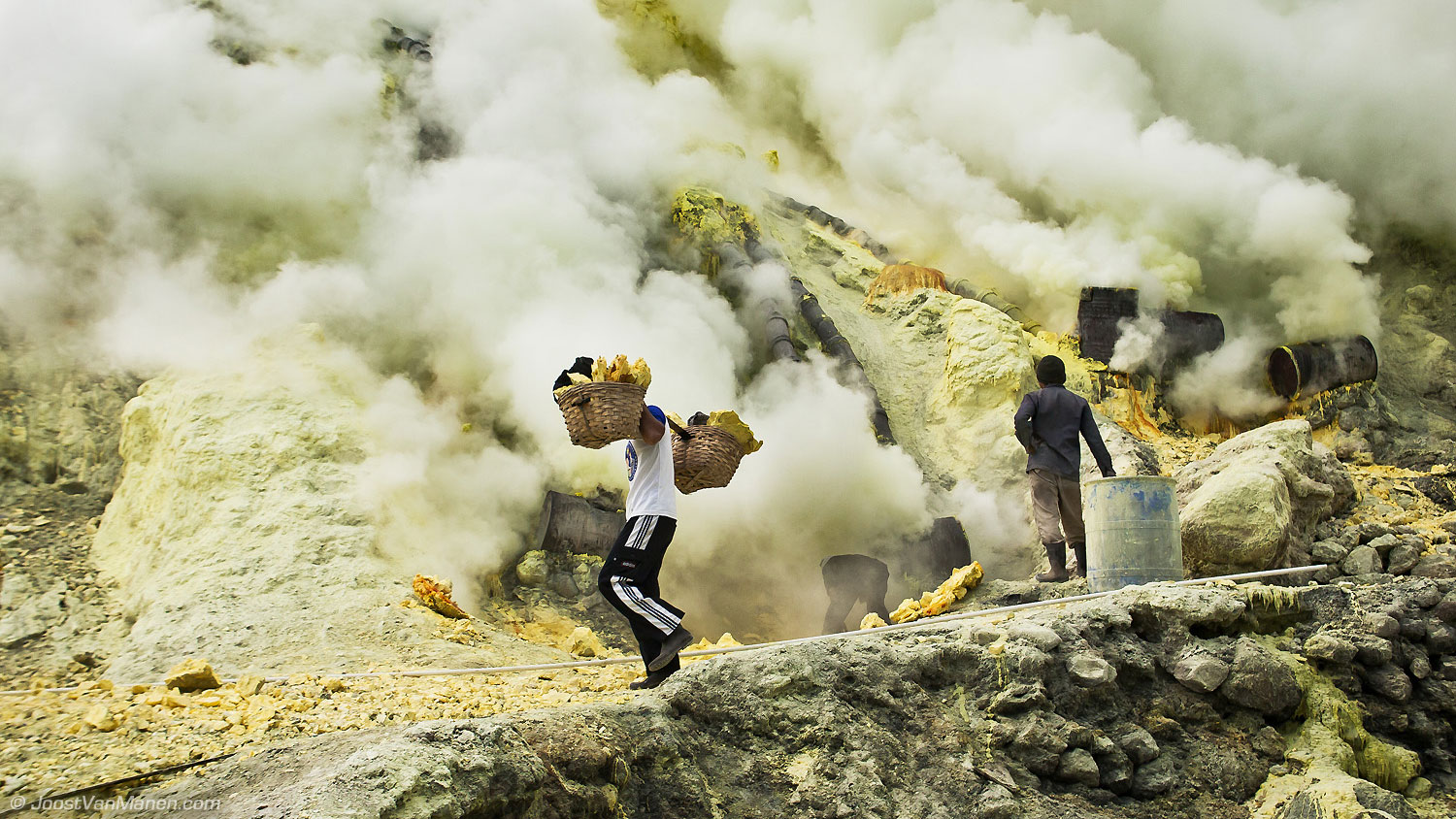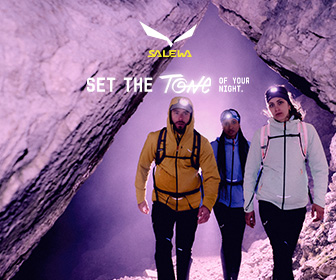Photography while travelling is popular. But how do you tell your travel story in photos? With more than 20 years of experience in photography, Joost van Manen has seen and captured many places on our globe. In addition to his celebrity portraits, fashion and art photography, he is a gifted travel photographer. As a professional photographer, he knows all the ins & outs of travel photography. We have asked Joost to tell his stories about what inspires him, especially for Gearlimits.
In this article, his story in photos about the – literally – breathtaking Kawah Ijen volcano.
Pacific Ring of Fire
ndonesia has the most volcanoes of any country in the world, with at least 76 active volcanoes. It is part of the so-called ‘Pacific Ring of Fire’. In the middle of one of those volcanoes, the Kawah Ijen, I had one of my most breath taking experiences as a travel photographer. And I mean this literally. This earthy steam oven will leave you gasping for breath. As a photographer, sometimes you have to push the limit to shoot extraordinary images, and this is an example of that.
The Kawah Ijen
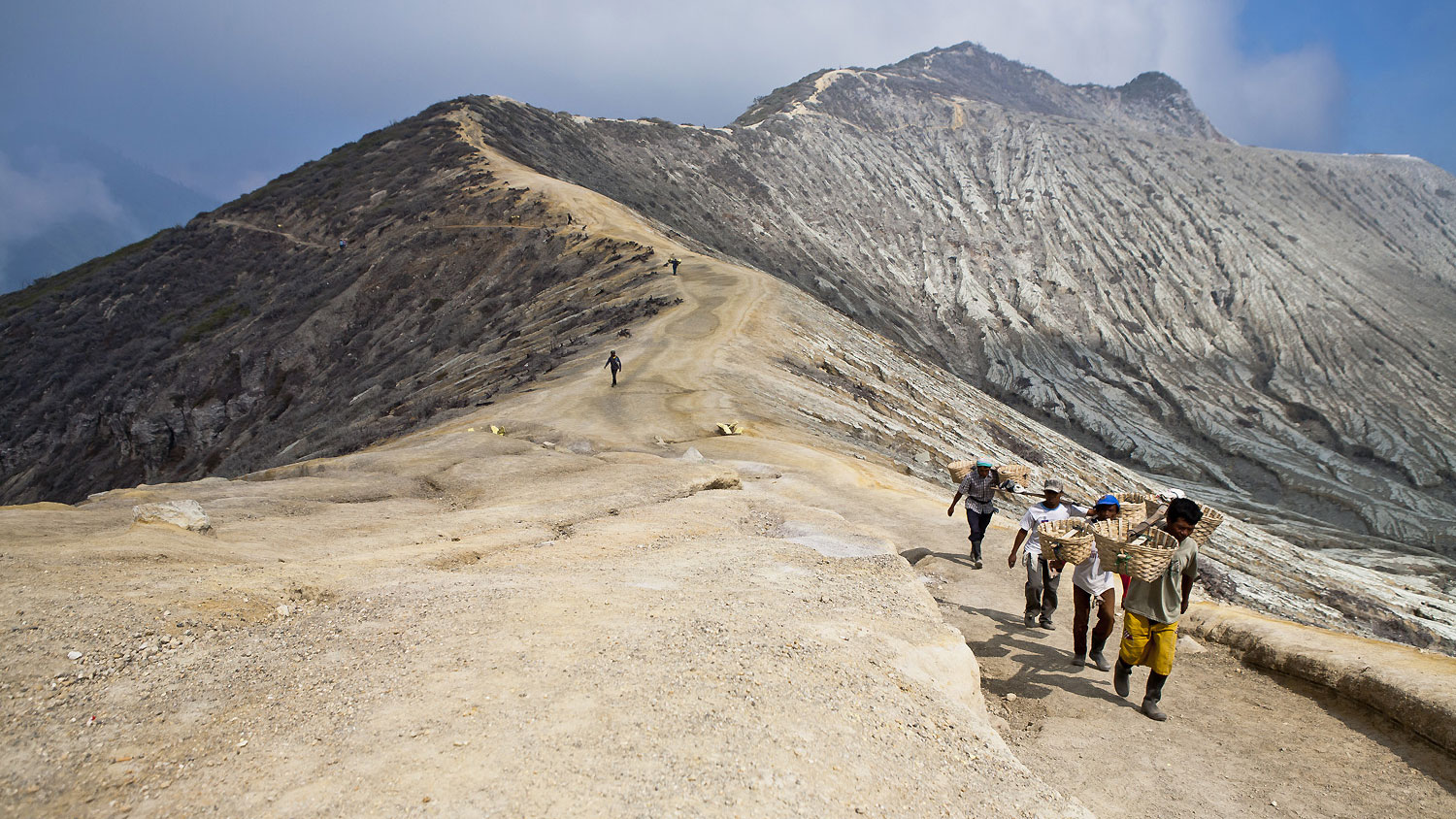
Located in the east of the island of Java, the Kawah Ijen is one of the most dangerous and unpredictable volcanoes in the world. Hundreds of miners climb the volcano every day and enter the crater for a valuable mineral: sulphur. This mineral is used for cosmetics, medicines, but also for fertilizers and insecticides.
The miners get up early every day at about 2 am and walk up the volcano with their empty bamboo baskets.
Impassable route

The Javanese miners descend into the crater via a dangerous, almost impassable route. From the rim, hundreds of porters can be seen crossing each other over rocks and loose stones, while poisonous sulphur clouds rise along the wall.
At the centre of the crater, the beautiful turquoise lake is occasionally visible, which lies at an altitude of 2,148 meters. But make no mistake: the water is warm and highly toxic, and cooling is not an option.
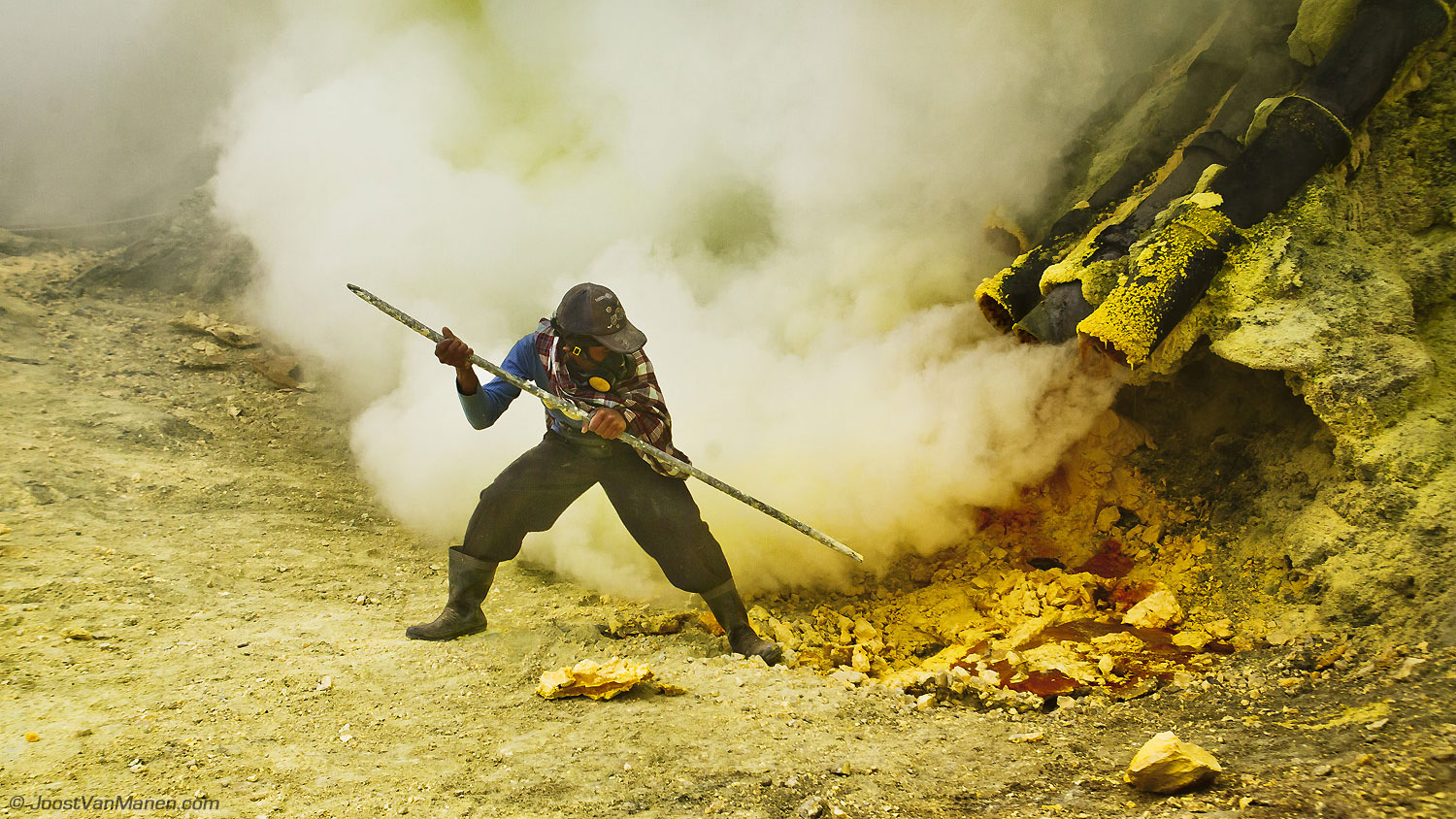
Arriving at the bottom is the sulphur mine. The sulphur rises from the volcano with great heat. Through engineered pipes, it is led to central points in the heart of the volcano. Here, amid the unpredictable poisonous gases, the miners break down the sulphur chunks manually with nothing more than an iron bar.
The climb up
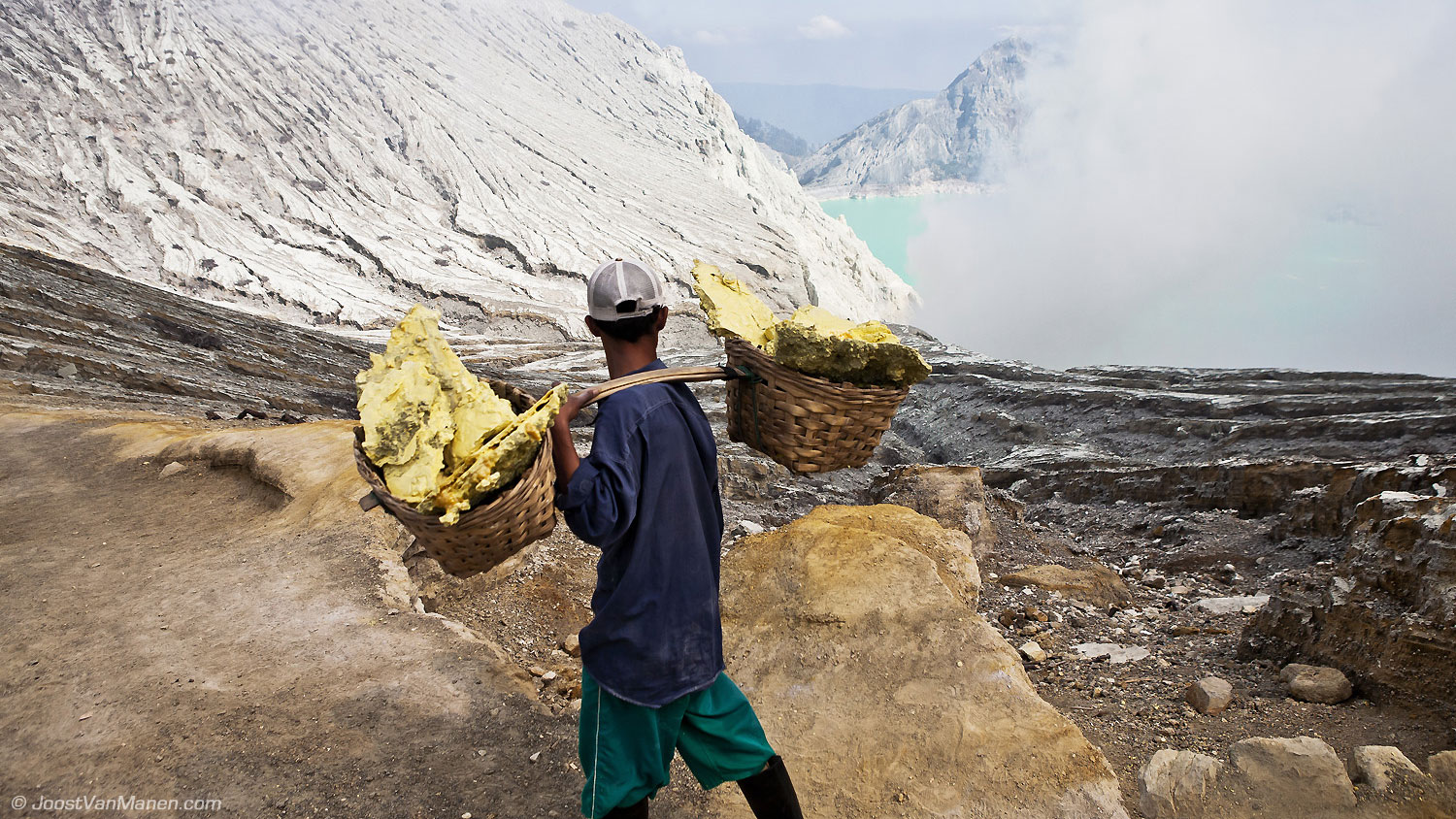
They fill their baskets with the brimstone fragments, and this is where the toughest part begins: the way back up. The enormous weight that 1 porter lifts is really unimaginable: the baskets are filled with about 70 to 80 kg of sulphur!
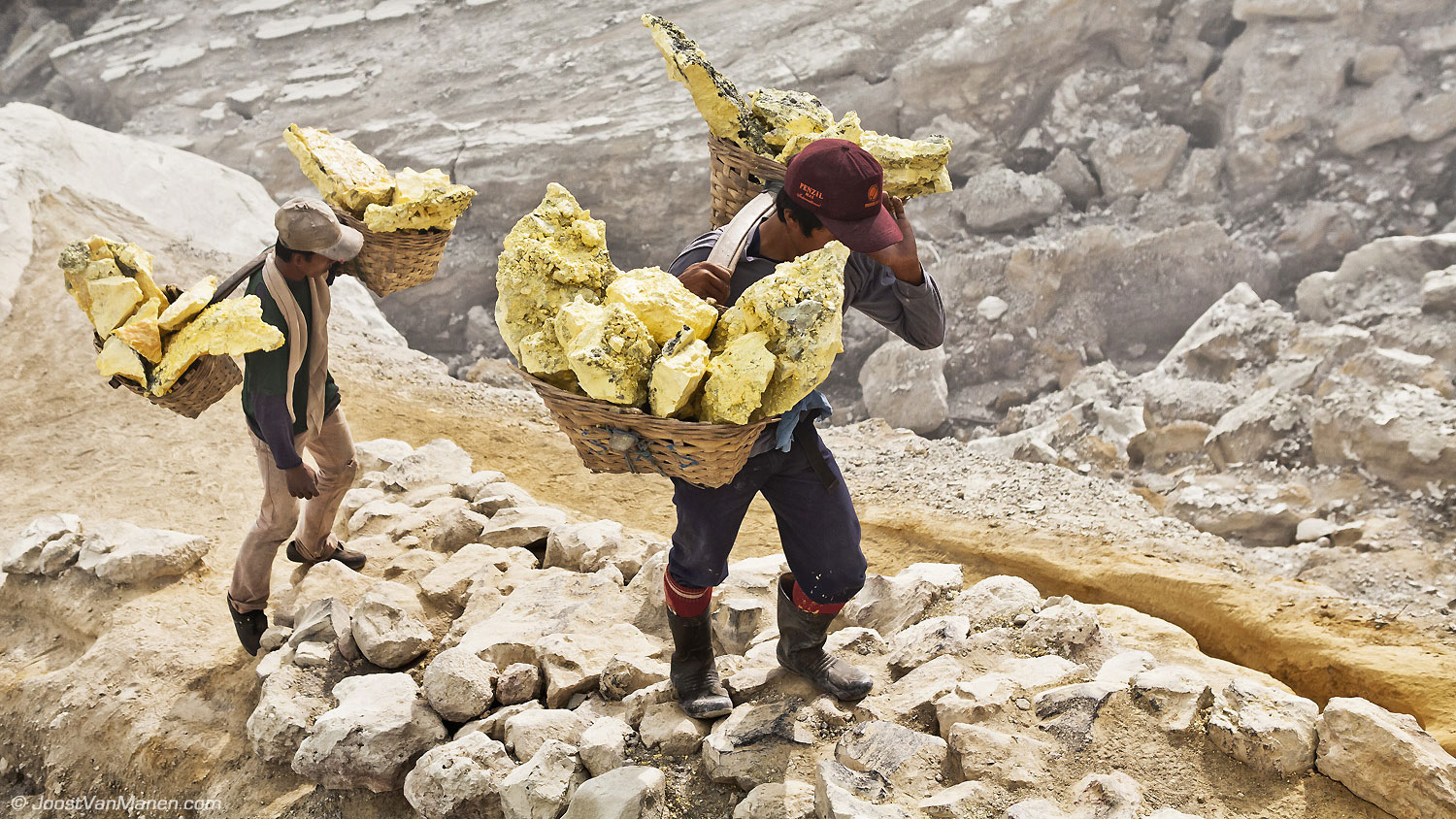
They carry these baskets back up through that difficult, dangerous path in rubber boots or flip-flops. Landslides are a regular occurrence, dragging workers along and killing them. They must always remain alert with every step they take in this working volcano.
Unpredictable sulfur fumes
The most difficult part of the climb is the poisonous sulphur fumes that rise unpredictably and are impossible to avoid. I have personally experienced how the gas clouds can completely suffocate you. And I was only there once. The workers walk the route twice a day.
The lungs of the workers burn in the two-hour trek uphill. The smoke is everywhere and makes you breathless. The heavy load forces them to take a deep breath in the toxic fumes that smell like rotten eggs. The workers cannot afford a gas mask and only have scarves for protection. In the long run, this can cause bronchitis and lung cancer. Although… there are also stories going around that there are still 70 year olds among the miners.
Weighing point
After this hellish climb, there is still 5 km to walk to the weighing point. Here they weigh their baskets, because the factory pays the workers per kilo.
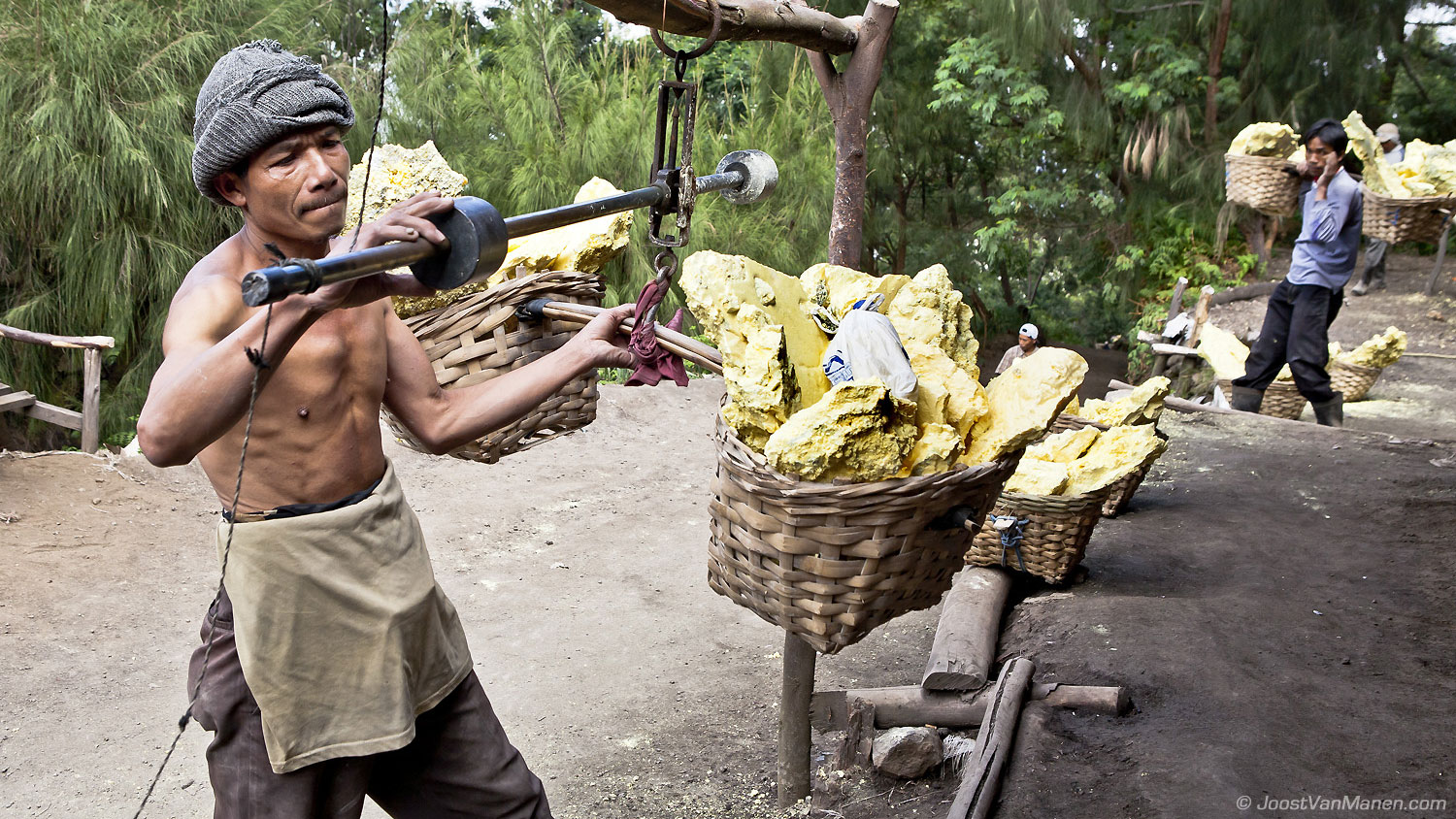
The rate is about 5 euro cents per kilo. That means that with 2 loads per day they earn about 8 euros a for an 11 hour working day. Although that is twice the average salary in Indonesia, the job of the men at Kawah Ijen might be one of the most difficult and dangerous in the world.
This place is very impressive, and it is a wonderful experience to see with your own eyes the appalling conditions in which people work. As a photographer the contrasting colours, the environment, the strength and commitment of the workers, and the ruthless earthly violence impressed me. Even camera equipment can stop functioning due to the sulphur fumes.
Filled with a cocktail of highly noxious gases, the Kawah Ijen is unpredictable, making it one of the most toxic places on Earth. The recording of such a document requires the utmost of you. But that cannot be compared to the hundreds of workers who work here every day.
Do you have questions or would you like to hear more about a topic? Then leave a message below text!
Want to see more from Joost?
www.joostvanmanen.com or follow him on Instagram

